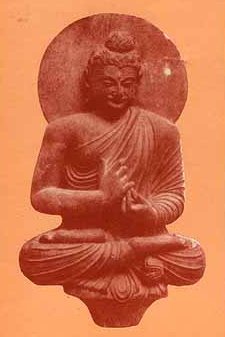Arahanta, Arahamta: 5 definitions
Introduction:
Arahanta means something in Buddhism, Pali, Jainism, Prakrit. If you want to know the exact meaning, history, etymology or English translation of this term then check out the descriptions on this page. Add your comment or reference to a book if you want to contribute to this summary article.
In Buddhism
Theravada (major branch of Buddhism)
Source: Pali Kanon: Pali Proper NamesA Talaing monk, the preceptor and advisor of Anuruddha. King of Burma. He made far reaching reforms in the Burmese Sangha of his day (Bode, op. cit., 12-13).
Source: Dhamma Dana: Pali English GlossaryM (Worthy one). A being who has eliminated the entirety of mental impurities (kilesas) and who, in consequence, is free from all attachment and from all forms of suffering.
Such a being has no reason to take rebirth into one of the thirty two spheres of sansara will experience parinibbana at the end of his present existence.
Theravāda is a major branch of Buddhism having the the Pali canon (tipitaka) as their canonical literature, which includes the vinaya-pitaka (monastic rules), the sutta-pitaka (Buddhist sermons) and the abhidhamma-pitaka (philosophy and psychology).
Languages of India and abroad
Pali-English dictionary
Source: BuddhaSasana: Concise Pali-English Dictionaryarahanta : (m.) one who has attained the Summum Bonum.

Pali is the language of the Tipiṭaka, which is the sacred canon of Theravāda Buddhism and contains much of the Buddha’s speech. Closeley related to Sanskrit, both languages are used interchangeably between religions.
Prakrit-English dictionary
Source: DDSA: Paia-sadda-mahannavo; a comprehensive Prakrit Hindi dictionary1) Arahaṃta (अरहंत) in the Prakrit language is related to the Sanskrit word: Arhata.
2) Arahaṃta (अरहंत) also relates to the Sanskrit word: Arahontar.
3) Arahaṃta (अरहंत) also relates to the Sanskrit word: Arathānta.
4) Arahaṃta (अरहंत) also relates to the Sanskrit word: Arahayat.
5) Ārahaṃta (आरहंत) also relates to the Sanskrit word: Ārhata.
Ārahaṃta has the following synonyms: Ārahaṃtiya.
Prakrit is an ancient language closely associated with both Pali and Sanskrit. Jain literature is often composed in this language or sub-dialects, such as the Agamas and their commentaries which are written in Ardhamagadhi and Maharashtri Prakrit. The earliest extant texts can be dated to as early as the 4th century BCE although core portions might be older.
Kannada-English dictionary
Source: Alar: Kannada-English corpusArahaṃta (ಅರಹಂತ):—[noun] (Jain.) a spiritual teacher.
Kannada is a Dravidian language (as opposed to the Indo-European language family) mainly spoken in the southwestern region of India.
See also (Relevant definitions)
Starts with: Arahanta Sutta, Arahanta Vagga.
Ends with: Garahanta.
Full-text: Arhata, Anagami, Arahanta Vagga, Saupadisesa, Arahamtiya, Arahontar, Arahayat, Arathanta, Moha, Patisambhida, Arahanta Sutta, Nasa, Padastha, Anorata, Akusala, Ariya, Abhinna, Ghataka, Nibbana, Arahant.
Relevant text
Search found 16 books and stories containing Arahanta, Arahamta, Arahaṃta, Ārahaṃta, Ārahanta; (plurals include: Arahantas, Arahamtas, Arahaṃtas, Ārahaṃtas, Ārahantas). You can also click to the full overview containing English textual excerpts. Below are direct links for the most relevant articles:
Dhammapada (Illustrated) (by Ven. Weagoda Sarada Maha Thero)
Matangalila and Hastyayurveda (study) (by Chandrima Das)
Buddha Desana (by Sayadaw U Pannadipa)
Chapter 5 - Yasa The Second Convert Into The Order < [Part IV - The Sangha]
Chapter 7 - Relevant Principles Of Man < [Part I - The Buddha Desana]
What Kamma is (by Sayadaw U Thittila)
Visuddhimagga (the pah of purification) (by Ñāṇamoli Bhikkhu)
(1) Recollection of the Enlightened One < [Chapter VII - Six Recollections (Cha-anussati-niddesa)]
Philosophy of language in the Five Nikayas (by K.T.S. Sarao)
2.3. The Third Buddhist Council < [Chapter 1 - Introduction]
4. Language and Knowledge < [Chapter 4 - Philosophy of Language in the Five Nikāyas]